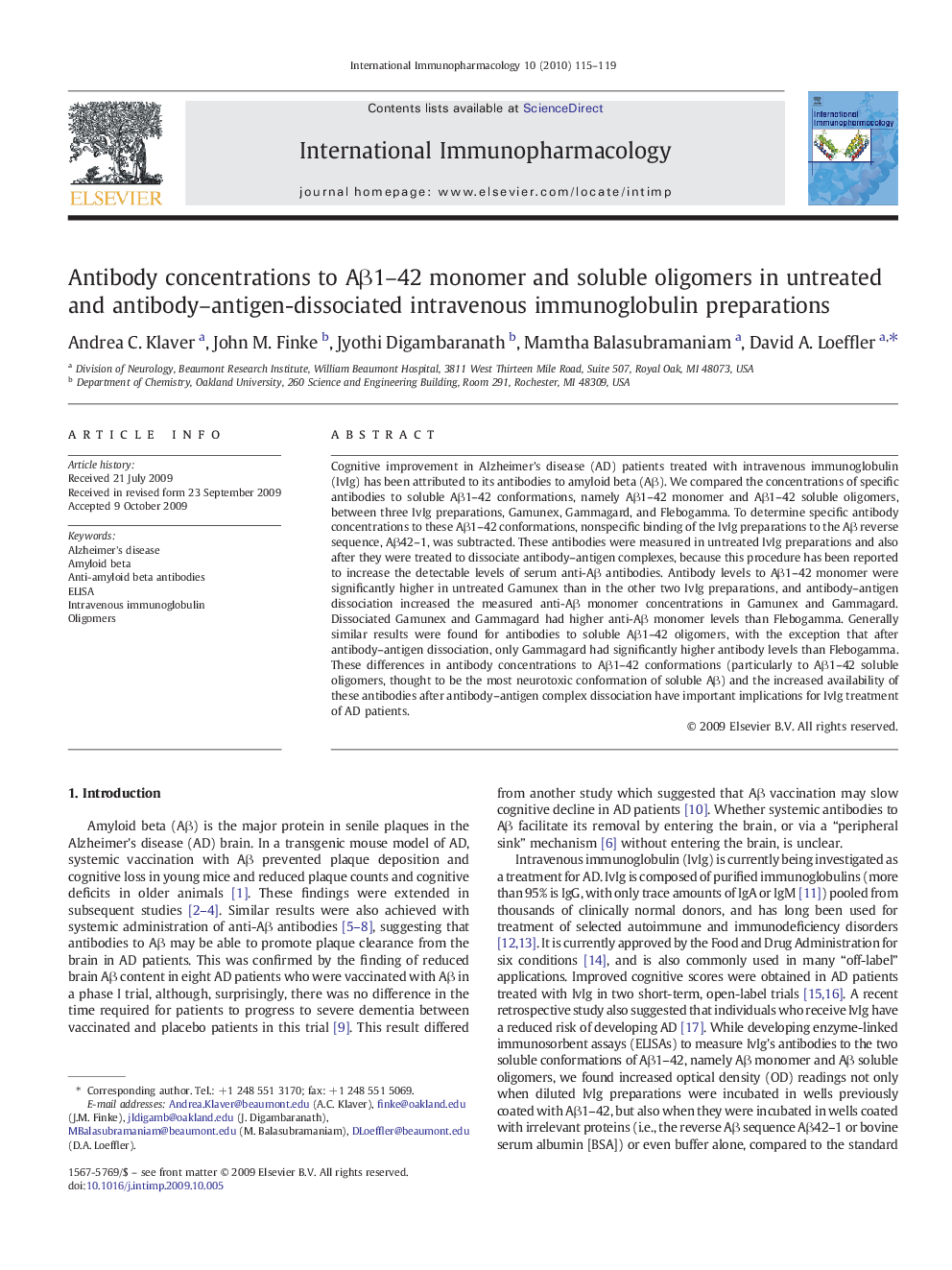| Article ID | Journal | Published Year | Pages | File Type |
|---|---|---|---|---|
| 2541252 | International Immunopharmacology | 2010 | 5 Pages |
Cognitive improvement in Alzheimer's disease (AD) patients treated with intravenous immunoglobulin (IvIg) has been attributed to its antibodies to amyloid beta (Aβ). We compared the concentrations of specific antibodies to soluble Aβ1–42 conformations, namely Aβ1–42 monomer and Aβ1–42 soluble oligomers, between three IvIg preparations, Gamunex, Gammagard, and Flebogamma. To determine specific antibody concentrations to these Aβ1–42 conformations, nonspecific binding of the IvIg preparations to the Aβ reverse sequence, Aβ42–1, was subtracted. These antibodies were measured in untreated IvIg preparations and also after they were treated to dissociate antibody–antigen complexes, because this procedure has been reported to increase the detectable levels of serum anti-Aβ antibodies. Antibody levels to Aβ1–42 monomer were significantly higher in untreated Gamunex than in the other two IvIg preparations, and antibody–antigen dissociation increased the measured anti-Aβ monomer concentrations in Gamunex and Gammagard. Dissociated Gamunex and Gammagard had higher anti-Aβ monomer levels than Flebogamma. Generally similar results were found for antibodies to soluble Aβ1–42 oligomers, with the exception that after antibody–antigen dissociation, only Gammagard had significantly higher antibody levels than Flebogamma. These differences in antibody concentrations to Aβ1–42 conformations (particularly to Aβ1–42 soluble oligomers, thought to be the most neurotoxic conformation of soluble Aβ) and the increased availability of these antibodies after antibody–antigen complex dissociation have important implications for IvIg treatment of AD patients.
